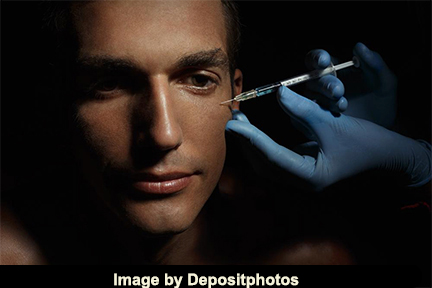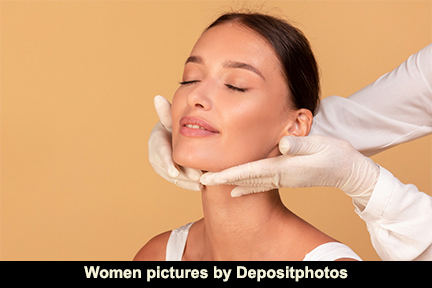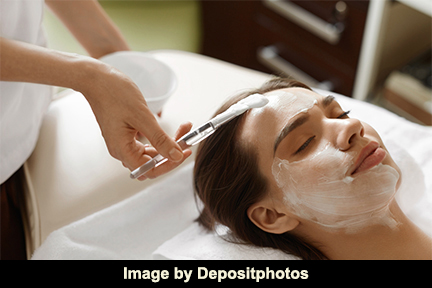 Many people are drawn to aesthetic medicine because they want to help others become their best selves. However, before pursuing a career as an aesthetician, it's important to learn all the intricacies of the job, as well as the role of aestheticians in aesthetic medicine.
Many people are drawn to aesthetic medicine because they want to help others become their best selves. However, before pursuing a career as an aesthetician, it's important to learn all the intricacies of the job, as well as the role of aestheticians in aesthetic medicine.
In this article, we'll explore the ins and outs of the aesthetics and cosmetics industry, explain the aesthetician's role in aesthetic medicine, and identify essential skills and qualifications needed to succeed in this field. Read on to learn more!
Understanding the aesthetics and cosmetics industry
Simply put, the aesthetics and cosmetics industry specializes in cosmetic procedures designed to improve a person's appearance. This can be achieved through non-invasive treatments, including chemical peels, microneedling, mesotherapy, facials, Botox, fillers, and many more.
Aesthetic medicine is a great middle ground between plastic surgery and the cosmetic business. It offers more than just beauty treatments such as waxing and eyelash extensions, but not surgical procedures such as facelifts or rhinoplasty.
According to the US Bureau of Labor Statistics, the aesthetics and cosmetics industry is a promising field for young people. The organization predicts that between 2022 and 2032, the total employment of cosmetologists and other beauty specialists will increase by 8%. It exceeds the average speed across all occupations.
FAQ: What does a person trained in aesthetics and cosmetics do?
Professionals who work in the field of aesthetics and cosmetics are called aestheticians or beauticians. They specialize in improving skin health, enhancing a person's natural beauty, and treating acne, aging, and pigmentation issues. Aestheticians are trained to perform cosmetic procedures and can also analyze a client's skin type, recommend treatments, and provide advice on at-home skincare routines and products.
 Areas of expertise for aestheticians
Areas of expertise for aestheticians
Aestheticians may specialize in many types of treatment, including:
1. Skincare analysis and consultation
Aestheticians with a dermatology degree can examine a client's skin types, conditions, and problems to provide personalized recommendations for skincare routines and products.
2. Facial aesthetic treatments
Aestheticians can also offer facial treatments aimed at improving the appearance of the skin. These include cleansing, exfoliation, chemical peels, moisturizing, various masks, microdermabrasion, microneedling, LED light therapy, laser skin resurfacing, etc.
3. Hair removal
Aestheticians are skilled in laser hair removal, which gives clients smooth, hair-free skin after two to six treatments. They can remove hair from almost any area of the body, including the face, arms, legs, underarms, and bikini line.
4. Facial massage and lymphatic drainage
In order to tighten and rejuvenate one's skin, aesthetic professionals can provide face massage and lymphatic drainage. These procedures help improve blood circulation, reduce puffiness, and promote lymphatic flow, resulting in a younger and fresher look.
 Training and qualifications of aestheticians
Training and qualifications of aestheticians
The "after-procedure" photos for a professional and aesthetic profile are among the numerous details an aesthetician must consider in order to succeed in their career and attract customers. Furthermore, along with a strong aesthetic sense and knowledge of current beauty trends, aestheticians must also obtain relevant qualifications and undergo professional training.
Education
For starters, soon-to-be beauty professionals must obtain a cosmetology degree to earn a cosmetology license. This involves completing a cosmetology program that will provide you with a certificate, diploma, or Associate of Applied Science (AAS) degree.
Training
In addition to theory, aesthetics students must have hands-on experience working with clients under supervision. Because of the required training, an aesthetics program typically takes from 600 to 1,600 hours. However, the actual number of hours varies by state.
FAQ: What is the duration of an aesthetics and cosmetics program?
The duration of an in-depth aesthetic program can range from several months to over a year. During this time, students receive both classroom instruction and hands-on training to prepare them for a career in the aesthetics and cosmetics industry.
Licenses
To practice aesthetics and cosmetology in the US, for example, a person must obtain a license from a state licensing board, such as the Board of Cosmetology or Department of Health. Once licensed, aestheticians can work in beauty salons, dermatology and cosmetic clinics, spas, or even medical offices.
FAQ: What are your responsibilities as an aesthetics and cosmetics professional?
As an aesthetician, your responsibilities may include providing skincare and massage treatments, performing hair removal procedures, and recommending skincare products to clients. Also, it's important to stay up-to-date on the latest trends and techniques in the beauty industry to secure a flow of customers.
The time it takes to become an aesthetician
The time required to become an aesthetician differs between countries and the chosen program. For example, in the US, most states will ask you to complete a program at an accredited beauty school or get an apprentice degree of 600 or more hours.
If you enroll in a full-time program, the learning process can take from several months to more than a year. However, the more complex treatments and techniques you choose to specialize in, the longer it may take to finish your education and training.
FAQ: How much does an aesthetics and cosmetics professional earn?
Despite the time spent on education, this profession rewards you with money. On average, an aesthetics and cosmetics professional in the US earns between $52,000 and $62,000 per year. However, this amount may vary depending on location, experience, and clientele. While an entry-level aesthetician starts with a salary of $40,000 per year, those with more experience and a loyal client base can earn between $80,000 and $100,000 per year.
Bottom line
How we look and feel about ourselves matters a lot in our society. Therefore, aesthetics are integral to medicine, beauty, and cosmetics industries. Aestheticians, in turn, play a crucial role in helping people look and feel their best, whether through facials, skincare treatments, or laser procedures. To enter this rewarding career field, you must always advance your skills and stay abreast of the latest trends and technologies in the beauty industry.
